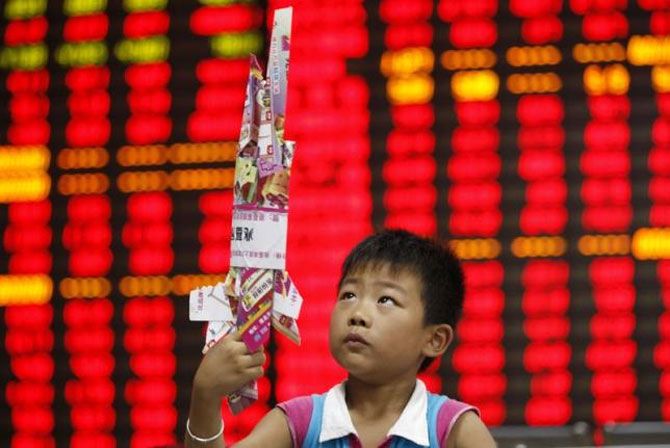
The revival in the economy is led by investment and growth in real estate, but the problems are far from over, notes Akash Prakash
The most important factor behind the recent stabilisation of the Chinese economy seems to be the sharp turnaround in real estate investment.
Investment in real estate was up 6.2 per cent in Q1 2016, after rising just one per cent in 2015.
Coming into 2016, most analysts had predicted a decline in real estate fixed asset investment with new construction starts down 20 per cent and property sales volumes down three to five per cent.
This negative view was based on the high inventories of unsold housing as well as the excesses in commercial real estate.
The conventional view was that it would take another year or two of subdued real estate investment to bring inventories under control.
The weakness in global commodities was also largely linked to this subdued outlook for Chinese new construction demand, as construction accounted for the majority of commodity consumption in the Chinese economy.
The question then has to be asked as to how sustainable is this turnaround in real estate investment?
Has China been able to salvage growth only by inflating a housing bubble?
If this growth is unsustainable does it mean that we are only postponing the economic restructuring and change in growth drivers that China so desperately needs?
Are we front loading growth only to have a more severe slowdown in 2017 as the real estate investment surge invariable cools? Investors may be celebrating China stabilising, commodity prices may have rebounded, but this may all reverse in short order.
The turning point for this revival in real estate seems to have been a focus on pushing housing sales from the very top of the Chinese leadership and clearly articulated by Xi Jinping in December.
This signal was used by local governments to push aggressively to ramp sales.
In February, minimum down payment for mortgages was reduced to 20 per cent and transaction taxes were also cut.
The central bank also encouraged banks to push mortgage lending. So much so that mortgage lending in Q1 was slightly over a trillion renminbi, compared to 2.7 trillion renminbi for all of 2015.
Nationwide housing sales surged 33 per cent in Q1, compared to two per cent growth in December 2015.
The surge in sales has invariable had an impact on prices as well, with tier-I cities in China experiencing price gains similar to the peaks of the last cycle.
The beginnings of a price spurt are now visible in tier-II and tier-III cities as well. As sales picked up, logically investment followed.
Historically the Chinese authorities have tightened housing and credit policies whenever housing prices nationally have diverged significantly from the long-term trend. This is because of political compulsions, and to make sure housing does not become unaffordable for the young and middle class.
With prices beginning to rise faster than the trend, if this were to continue and accelerate further, at some stage we will see measures from the central government to cool down the property markets.
This has been the historical pattern of behaviour of the Chinese policy makers.
They may not reverse course entirely but will certainly endeavour to slow the housing markets, if price rise get out of hand. Any pullback on mortgage financing or other steps to cool the markets will impact sales and ultimately new construction and investment.
This may not happen immediately, but we should be aware of the risks of a policy reversal.
Taking another perspective on the property market recovery, looking at unsold inventories, global investment research organisation Gavekal has drilled down into regional level data to try and understand the fundamental moorings of this recovery.
Their conclusions are as follows.
The inventory overhang which had slowed the property markets is regional. There are some provinces, 13 in total, where inventories are down substantially (back to mid-2011 levels).
Here new construction makes sense.
In the remaining 18 provinces inventories have hardly declined at all. In 10 provinces there has been no decline at all. There is no reason for construction to pick up in these areas.
Drilling deeper, they tried to establish the health of the construction pickup, is it concentrated in the provinces where inventories have declined and new build is needed?
Or have we seen investment across China, even in provinces where inventories are still sky high?
Their analysis shows that in the 13 healthy provinces, real estate investment hit a bottom in November, rising one per cent in February.
In the 18 more challenged provinces, real estate investment rose even faster, by six per cent, with construction starts up by 23 per cent.
Given the surge in construction activity in these provinces despite no improvement in their inventories of unsold properties, the most likely explanation is the investment is being driven by the state.
If true, this is the exact opposite of the stated policy, showing the pressures to shore up growth.
If as their data indicates, the progress on inventory destocking is limited, when taken on a nationwide basis, then the sustainability of this real estate rebound is in question.
It seems that only in a few states can a revival of housing starts be justified on the fundamentals of demand, unsold inventory etc.
Construction activity and new investment will invariably fade in those areas where any new construction is only leading to a further build in inventories.
The underlying rational market based response component of the current recovery in real estate investment seems to quite limited.
We may see a sharp downturn in construction activity once again, once the current stimulus runs out.
The stability in China's growth numbers have been welcomed by investors globally.
It has taken the bear case off the table for global commodities, EM currencies and the EM asset class.
However, the source of this stability is largely based on the revival of investment in real estate.
This is where there has been a positive surprise.
This surge in real estate activity seems to be based on shaky foundations. It may be borrowing growth from the future and setting up the Chinese economy for another sharp slowdown in 2017.
The stabilisation in the Chinese economy is not based on the economy weaning itself off the old investment based drivers of growth.
The growth concerns around China and its economic model, rampant till 45 days ago could very easily resurface if this property revival fades.
As investors we have to be aware of this risk and closely monitor it. Neither China nor EM as a whole may be out of the woods just yet.
The image is used for representational purpose only. Photograph: Reuters
Akash Prakash is at Amansa Capital. These views are his own









